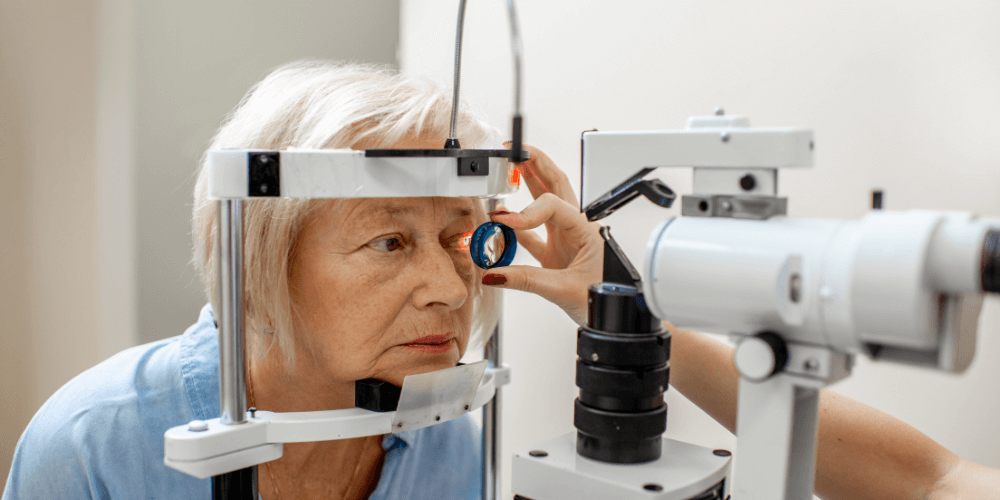Introduction:
Harnessing stem cells’ power could transform eye disease treatment, replacing damaged cells and offering new hope for vision restoration.
Key Takeaways:
- Stem cells offer promising treatments for eye conditions by replacing damaged or abnormal cells.
- They can generate transplantable cells for corneal transplants and protect neurons critical for vision.
- Research is ongoing, with potential benefits including restoration of vision in retinal degeneration cases.
Can Stem Cells Treat Eye Conditions?
Stem cells, capable of transforming into specialized cells, may revolutionize treating eye disorders by regenerating damaged parts of the eye, such as the retina, optic nerve, and cornea. This innovative approach offers hope for conditions previously deemed untreatable, potentially restoring vision through cellular replacement and regeneration.
How Eye Conditions Can Be Treated With Stem Cells
The eyes enable us to see the world that is around us, to transfer data we have discovered to the brain and discover light in our environment. It has a very intricate structure that comprises various specialized parts that each have a specific job.
The major parts of the eye are the retinal pigment epithelium, optic nerve, retina, lens, and cornea.
Treating Eye Disorders With Stem Cells
Eye disorders occur whenever any of the parts of the eye stop working correctly or are injured. Eye conditions are difficult to treat since it isn’t easy to acquire new biological parts for the eye.
- Stem cells can help with that. Stems cells are a group of active and new specialized cells. They can help to replace aberrant or injured cells within the eye.
- Currently, there are no therapies for treating neurodegenerative eye conditions. However, the concept of stem cell transplant for invigorating damaged cells is very appealing.
- Stem cells may be exploited for producing endless transplantable cells for treating the eye. Corneal transplants can be done using stem cell therapy.
- These cells can protect many of the neurons inside of the eye that are critical for vision.
- It has been confirmed that stem cell therapy can potentially benefit retinal deteriorating conditions by producing growth factors within injured neuropil or through replacing cells that are lost in the eye.
- There is a new promise offered by stem cell therapies for individuals to be able to regain their vision.
- Stem cells are rich in growth factors that may become pigmented with retinal pigment epithelium features.
- Muller stem cells that have the right growth factors are able to transform themselves into retinal nerve cells.
- The trusting cells inside of the body are the stem cells. Stem cells that are detached from your body may be supervised to become the eye’s corneal cells, photoreceptor cells, optic nerves, or muscle cells so that the eye can resume its normal function.
- Conclusion: Stem cell therapy may benefit individuals who have molecular deterioration and also those with loss of vision. There is ongoing research on these issues.
- Stem cell profiteering still needs to have a thorough understanding of being able to identify key regulators of the photoreceptor differentiation pathway.
- There are numerous paths that stem cell research is currently taking for treating eye conditions.
To know more about regenerative treatment for joint pain, optimal wellness solutions , an OC Wellness Physician Medical Center is open for your questions.
Contact us for a FREE consultation.
Recent Blogs
Why Physical Therapy Should Be Your Secret Weapon Before Surgery
Surgery, while sometimes necessary, can be a daunting prospect. The recovery process is often lengthy and filled with unknowns. But what if there was a way to optimize your body's readiness for surgery and [...]
Spinal Decompression Therapy: A Non-Surgical Option for Herniated Discs
The discs in your spine act as cushions between the vertebrae, providing flexibility and absorbing shock. When the outer wall of a disc weakens or tears, the soft inner core can bulge or push [...]
PRP for Knees_ A Promising Option for Pain Relief and Mobility – word
For many people, knee pain is a constant companion, limiting mobility and impacting quality of life. Traditional treatments like pain medication and physical therapy can offer relief, but they may not address the underlying [...]




